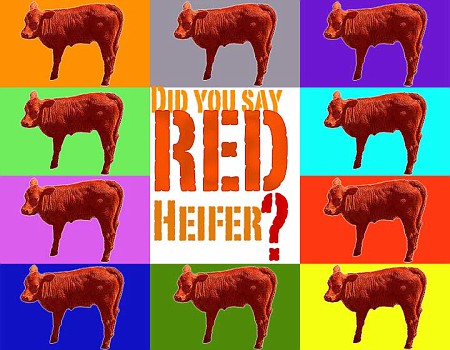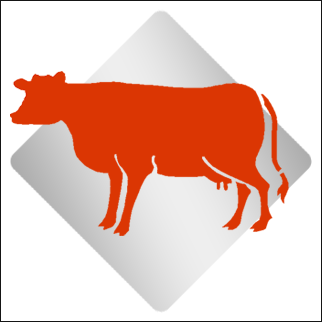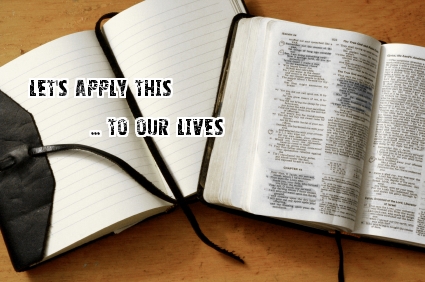 Introduction: The ordiance of the red heifer is not ... like the sin offering or the guilt offering that was required for sin and for guilt. It was actually the ashes of the red cow and the running water combined to make a water of purification to be applied when a person had come in contact with the "dead". ..... This is a cow that is being offered, not a bull, not a goat, not a ram, not a lamb...but a cow. It’s not being offered at the altar, it’s being offered outside the camp. All sorts of strange requirements are made in this particular ceremony that are not made for other sacrificial parts of Israel’s law. Rather than a male, it is a female. Other than that, all the characteristics point to the fulfillment in Christ. The female could represent the church that will be spotless and blameless because of our righteousness in Christ. There are some very interesting things concerning the Red Heifer Ordinance and the History and Future of Israel:
Introduction: The ordiance of the red heifer is not ... like the sin offering or the guilt offering that was required for sin and for guilt. It was actually the ashes of the red cow and the running water combined to make a water of purification to be applied when a person had come in contact with the "dead". ..... This is a cow that is being offered, not a bull, not a goat, not a ram, not a lamb...but a cow. It’s not being offered at the altar, it’s being offered outside the camp. All sorts of strange requirements are made in this particular ceremony that are not made for other sacrificial parts of Israel’s law. Rather than a male, it is a female. Other than that, all the characteristics point to the fulfillment in Christ. The female could represent the church that will be spotless and blameless because of our righteousness in Christ. There are some very interesting things concerning the Red Heifer Ordinance and the History and Future of Israel: In the News... The red heifer that was brought to the forefront of the news in March of 1997, with the report that for the first time in 2,000 years, a red heifer was born in Israel. She was named "Melody," and from day one, there was controversy. By some, she was declared a miracle from God and a reason to start building the third temple to welcome the Messiah. Others balked upon discovering a few white hairs that disqualified her from being the unblemished one. Some insisted that the cow be shot dead before she cause an uprising that would result in war. What a stir this little calf created !! ... More recently, another red heifer was born in Israel in Spring of 2002, which is the last I read about.

Numbers Chapter 19 - Observation Questions
1. The Lord spoke to Moses and Aaron about the sons of Israel bringing to them "an unblemished red heifer". What other qualifications did He give concerning this red cow? vs. 1,2 -
2. Who were they to bring the red heifer to? vs. 3
3. Where was the red heifer to be slaughtered and in whose presence? vs. 3
4. What was Eleazar, the priest, to do with some of the blood from the slaughtered red heifer? vs. 4
5. How many times was he to do this? vs. 4
6. Rather than be burned on the bronze altar as the offerings were, the red heifer was to be burned right there "outside the camp" in the sight of Eleazar the priest. What was specified as being burned up to ashes? vs. 5 - Name 4 things
7. What 3 things was the priest to cast into the midst of the burning heifer? vs. 6 - Name 3 things stated
8. These were the same 3 things that were used when cleansing a leper. Remember there were 2 clean birds to be brought. One would be slain in an earthenware vessel over "running water", and the other one (the live one) would be tied to the cedar wood and hyssop with the scarlet string, dipped into the blood of the slain one, and the priest would sprinkle the leper "7" times and pronounce him "clean". Then, the live bird drenched with the blood would be set free over the open field. Comment on the following verses, and make a list of what you find similar in the passage with the red heifer ordinance:
- Leviticus 14:1-7 -
9. Back to Numbers 19. What did the priest do after this? vs. 7
10. How long would the priest remain unclean? vs. 7
11. What about the person who did the burning of the red heifer? What would he do after this? vs. 8
12. How long would the one who had burned the heifer remain unclean? vs. 8
13. A man who was "clean" gathered up the ashes of the heifer and deposited them "outside the camp" in a "clean place". What was the congregation of the sons of Israel to do concerning the ashes of the red heifer stored in the clean place? vs. 9
14. What did the water and the ashes do for the unclean person? vs. 9
15. The one who gathered the ashes of the heifer was "clean" when he did so. Yet, once he gathered them and took them to the "clean" place, he was now "unclean". That's a mysterious situation, isn't it? ... How long was he to be unclean? vs. 10
16. How long was this to be a statute with the sons of Israel and the aliens who sojourned with them? vs. 10
More History on Israel and the Red Heifer Ordinance: Twice in this chapter, God commands that this is to be "a perptual statute."
Israel did perpetually continue this purification process. When the ashes would begin to run low, another red heifer was sacrificed, and the original ashes mixed in with the new heifer.
In the history of Israel, nine red heifers were sacrificed. But when the Roman armies of Titus Vespasian invaded Jerusalem in 70 A.D., destroying the Jewish Temple, the ashes of the red heifer were lost. In the last 1900 years, no red heifer had been born in the nation of Israel. Since Melody has been disqualified, but another was born in 2002, they may have their 10th one now.
What is the big deal about the 10th one? According to Jewish history, a rabbinic prophecy from Rabban Maimonides foretold that the Messiah would sacrifice the tenth red heifer at His coming. But we know if this prophecy is fulfilled, it will not be the true Messiah, but a false messiah - antichrist.
So many things are in place for the final seven years to begin. As believers in Jesus Christ, we know the red heifer was a symbol of Him and even the church who is One with Christ ... since it was a female cow. He is One with the Father and they are One with the believers. The church could be raptured at any moment..... Are we ready?
Note: The narrative turns from the red heifer ordinance to the discussion of touching the dead. Remember that 14,700 people had just died of a plague and the others were afraid of dying after they had come near to bring the rods for God to show them who the leader was that He had chosen among their tribes. Aaron, whose rod budded, was also the one who went among the people to stand between the dead and the living and the plague was put into check. The Lord went over the duties and the provisions of the Levites after that, explaining that no one other than the Levites were to come near the tent of meeting or they would die. Death was something common among them, as God had said the older generation would die off during the 40 years in the wilderness wanderings, so these things needed to be discussed for sure!
17. How long would a person be unclean if they touched the corpse of any person? vs. 11
18. When touching the "dead" person and become "unclean", how would they become clean again? vs. 12
19. What "water" is he referring to based on this chapter? vs. 12
20. What days were they to purify themselves with this water? vs. 12 - Name 2 days from the time they became unclean.
21. If a person touched a corpse and did not purify himself, what else did he defile? vs. 13
22. Because of this, what would happen to that person? vs. 13
23. What was the reason he remained unclean? vs. 13b
24. If a person died in a tent, what would be the circumstance for everyone who then went inside the tent? vs. 14
25. What would happen to every open vessel that did not have a cover tying it down that was inside the tent where the person died? vs. 15
26. If anyone was in the open field and touched someone who had been slain with a sword or died naturally would be unclean for 7 days. What else would make them unclean for this amount of time if they were to touch it in an open field? vs. 16
27. How would the person who touched these things be purified from their sin? vs. 17
28. What ashes and water is it referring to in context of this chapter?
29. How would the tent, the furnishings in the tent, and those who had touched a dead person, a bone, or a grave be cleansed again? vs.18, 19
30. What days would the unclean be sprinkled on from the day they became unclean? vs. 19
31. What would happen on the 7th day of this ceremonial cleansing? vs. 19b
32. What would happen to the person who did not purify himself in this way from his uncleanness? vs. 20
33. After the "clean" person sprinkled the "unclean" things and people, what did they have to do to be "clean" again? vs.21
Note: When an unclean person touched another, that person would also be unclean until evening. (vs.22)
Application:
34. The water of purification was made from the "running water" and the "ashes" of the red heifer. They applied it when they needed to be made "clean" after touching the "dead" things. I was thinking about how although we are not "of this world", we are "in this world", and each day, we walk among the "spiritually dead" who do not know Christ. Just being in the world system, we will be defiled by things we see, things we hear, and even things we touch. We can also be cleansed by "running water" and the "ashes", for we have the fulfillment of Jesus who was portrayed in the red heifer and we have the Holy Spirit, the "running water", to make us clean again. Remember when Jesus taught the He was the "Living Water" and the Scripture said that He was referring to the Holy Spirit when He said that "rivers of living water" would run through us? Comment on the verses below:
- John 7:37-39 -
- Ephesians 5:25-27 -
- Hebrews 9:13-14 -
- 2 Corinthians 6:17 -
- Ephesians 2:1-,2 -
- John 13:7-11 -
- 1 John 1:9 -
- Titus 3:5 -
35. Summarize the lesson and post a prayer if you would like.


No comments:
Post a Comment